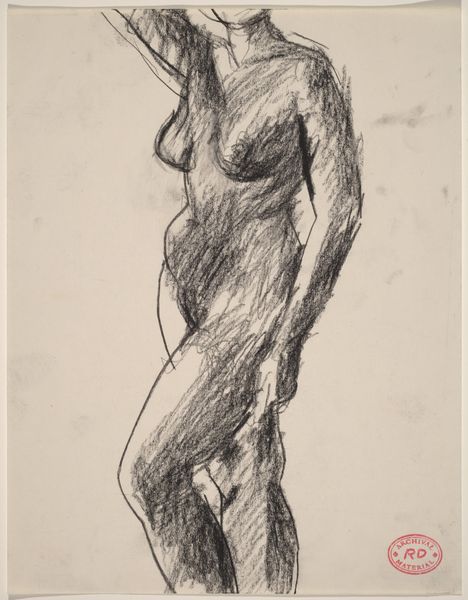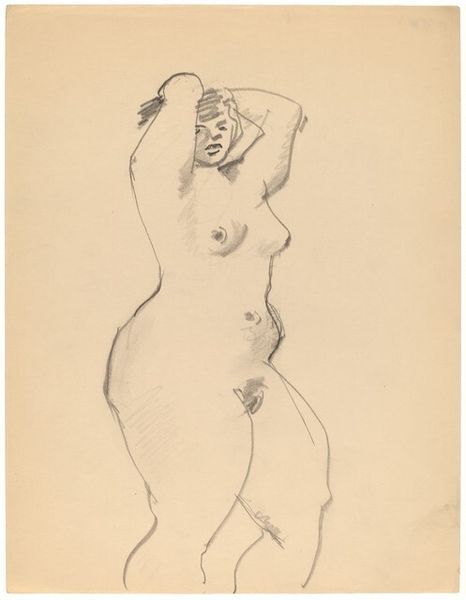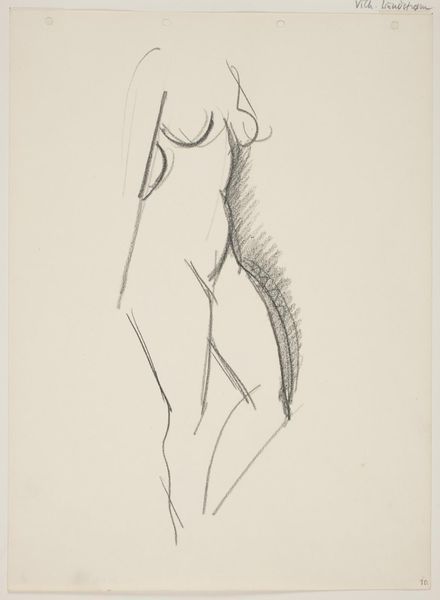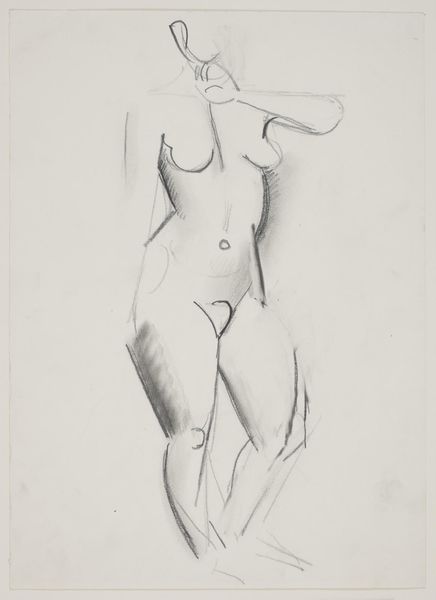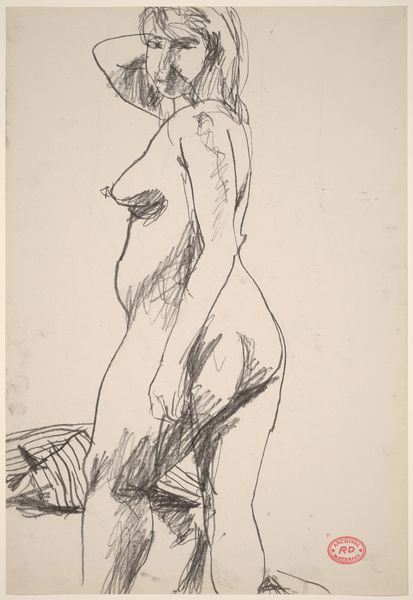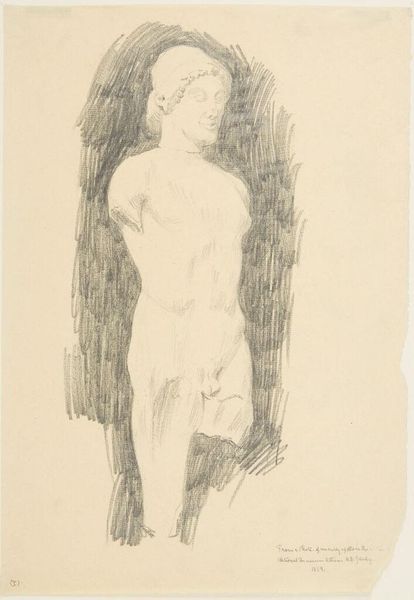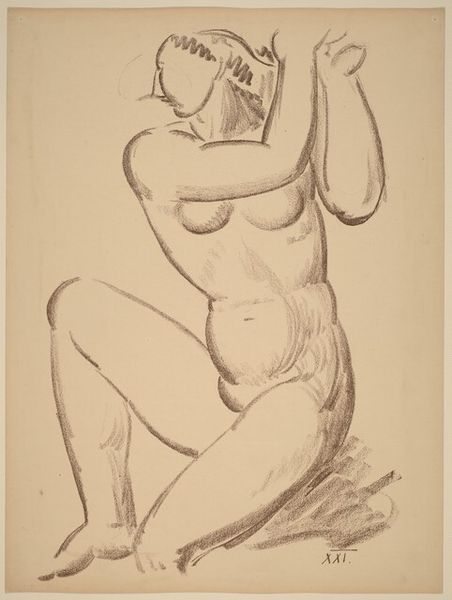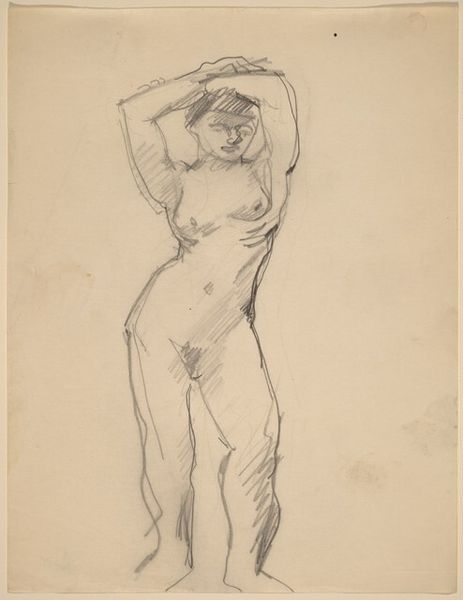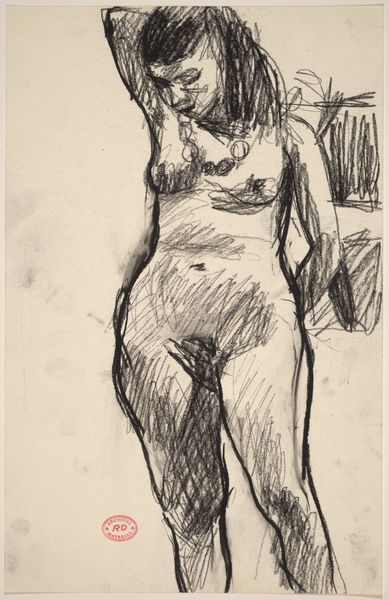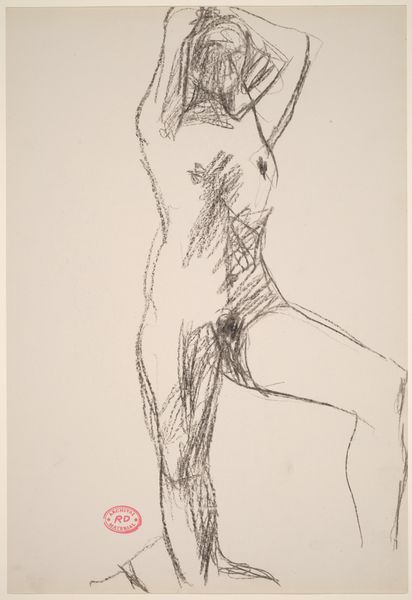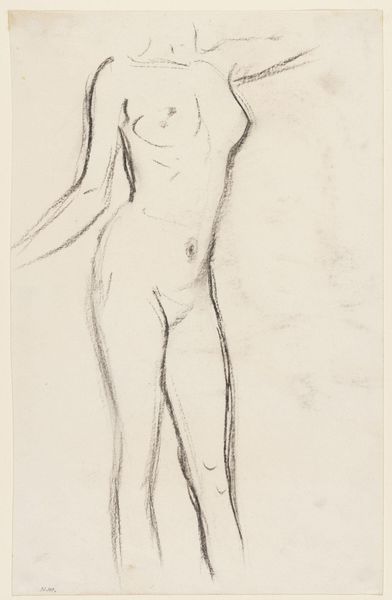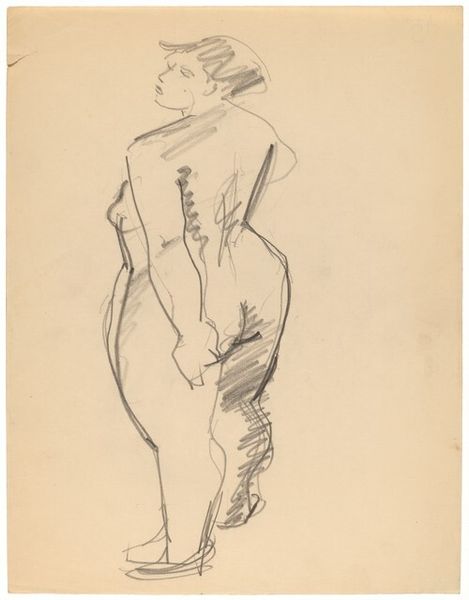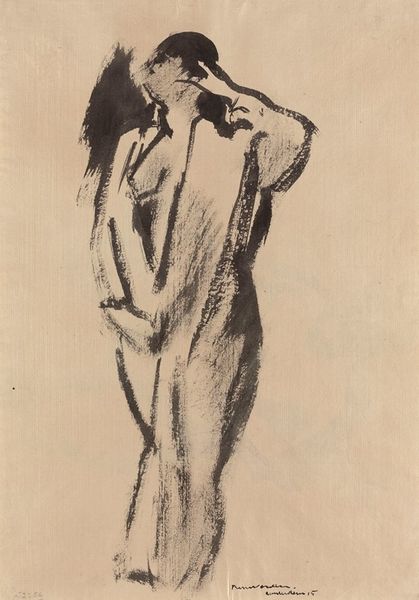
print, etching
#
portrait
# print
#
etching
#
figuration
#
pencil drawing
#
nude
Dimensions: plate: 21.8 x 15.5 cm (8 9/16 x 6 1/8 in.) sheet: 34.1 x 26.8 cm (13 7/16 x 10 9/16 in.)
Copyright: National Gallery of Art: CC0 1.0
Editor: We’re looking at Milton Avery's "Nude Combing Hair," an etching from 1950. The lines are so simple, but they really convey a sense of vulnerability, maybe even a little defiance, in this figure. How do you interpret this work? Curator: It’s a compelling image, isn’t it? Avery created this during a time of evolving representations of the female nude. We see a figure unidealized, presented without the male gaze dominating. Consider the postwar context, where women's roles were being renegotiated. How might this etching challenge or reinforce conventional beauty standards and the objectification of women at the time? Editor: That's interesting. I hadn't thought about the societal implications. Is the act of combing hair significant in this reading? Curator: Absolutely. Combing hair is an intimate act, typically done in private. By making it public, Avery hints at a shifting discourse around female identity and intimacy. Think about the performative aspect of beauty. Who is this act for – herself, or a projected audience? This print opens a dialogue about the private and public selves, femininity, and societal expectations. Editor: So, it’s not just about aesthetics; it's also a statement about the female experience? Curator: Precisely. Avery, through what appears simple, engages in a conversation about representation, gender, and the female body as a site of cultural meaning. By focusing on the everyday act, the print invites the viewer to question the pervasive, often unrealistic, portrayals of women in art and media. It makes you wonder about the narratives being woven around women at the time. What did you gain from our discussion? Editor: I appreciate how this image challenges conventional interpretations of the nude form and its broader social context. Curator: Agreed, and remember how this is always evolving; we still discuss how representation of the human body still struggles today!
Comments
No comments
Be the first to comment and join the conversation on the ultimate creative platform.
